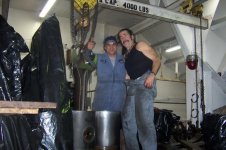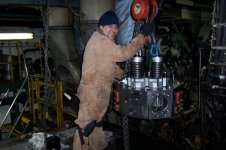Rangerman2019
New member
Last year when winterizing my Verado 250 I started to feel the sparkplug wasn't going in properly so I pulled it out and looks like the first thread to 2 threads were getting cross threaded. Now will using a thread chaser fix this? or is going to a mechanic my best bet?
Thanks
Paul
Thanks
Paul



